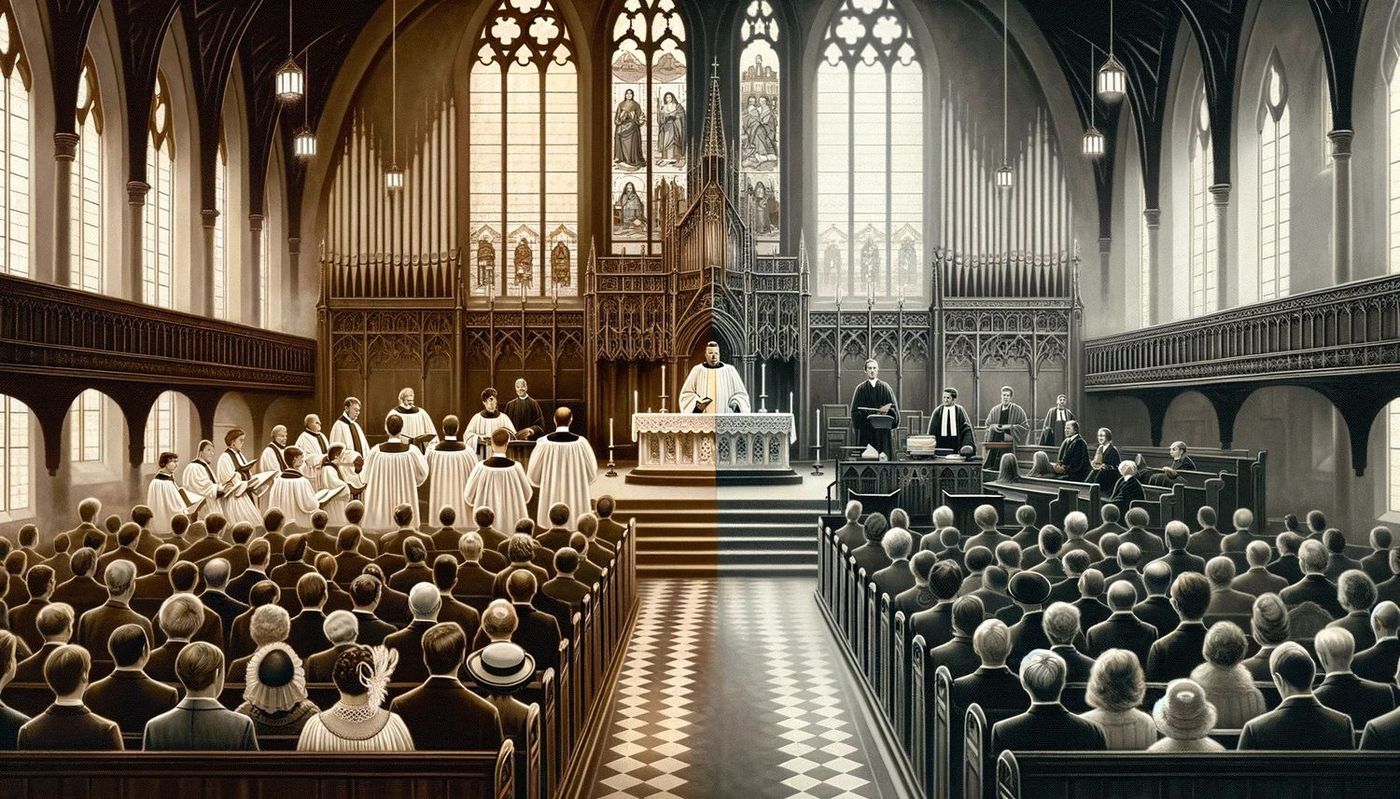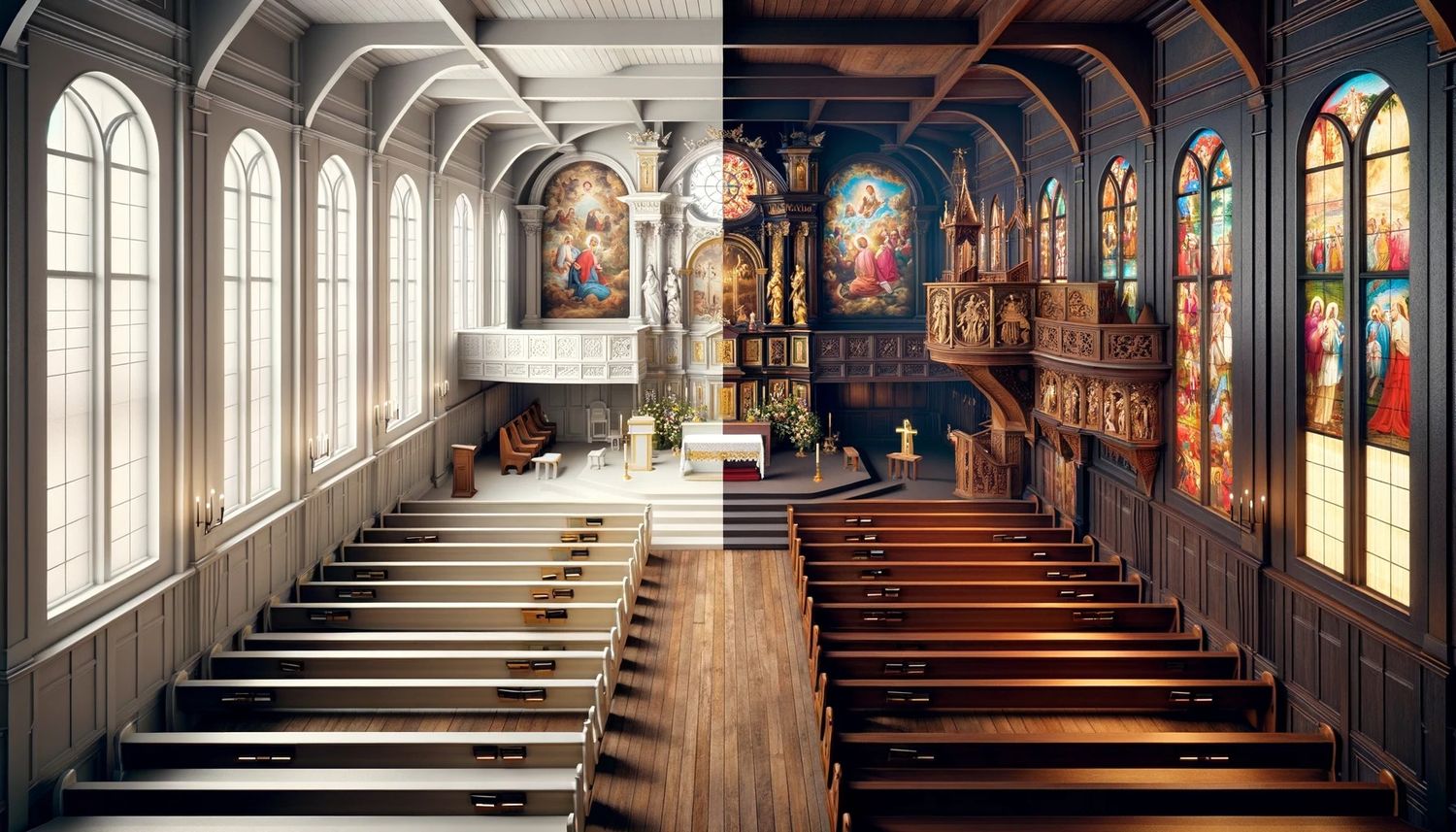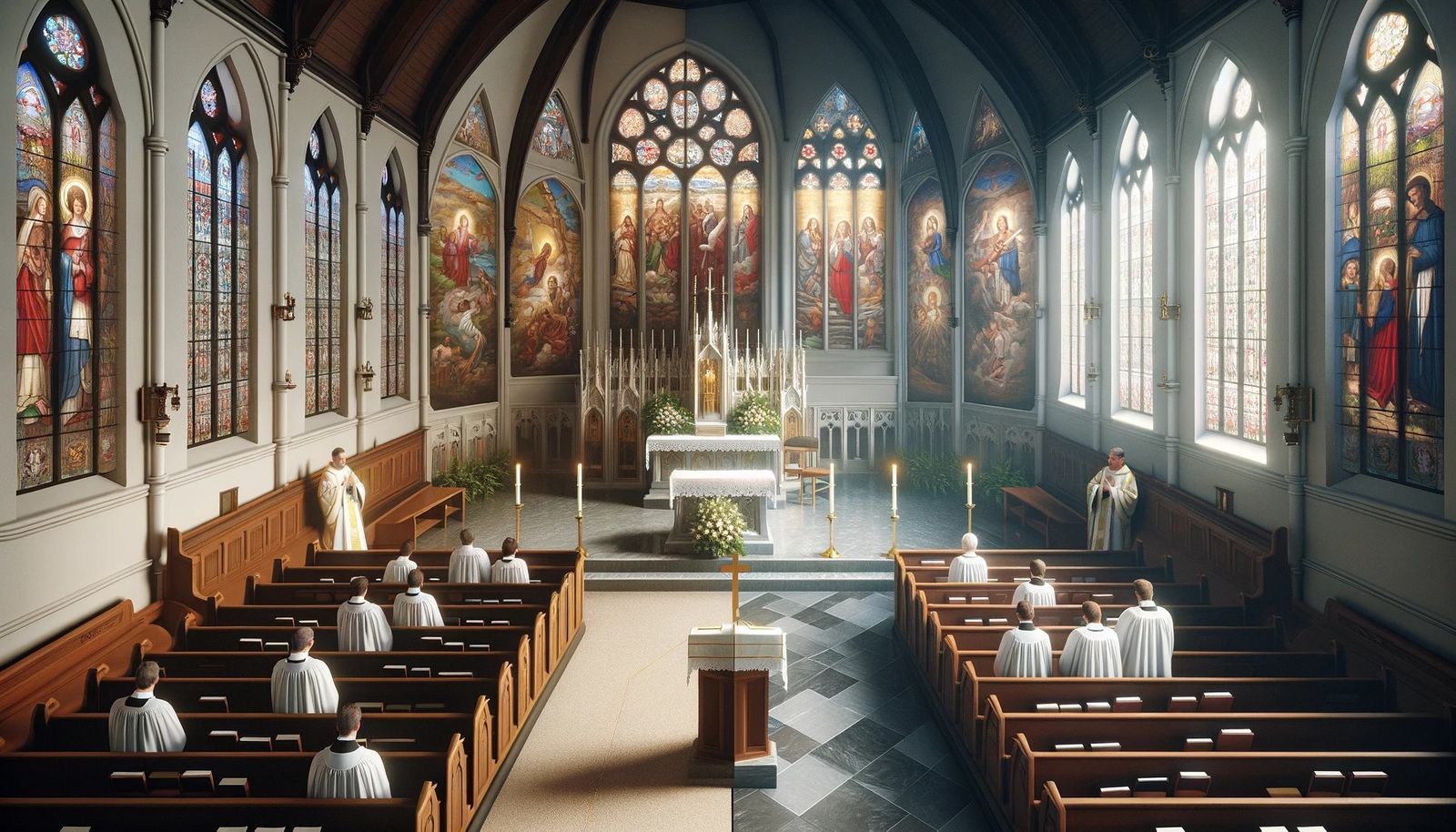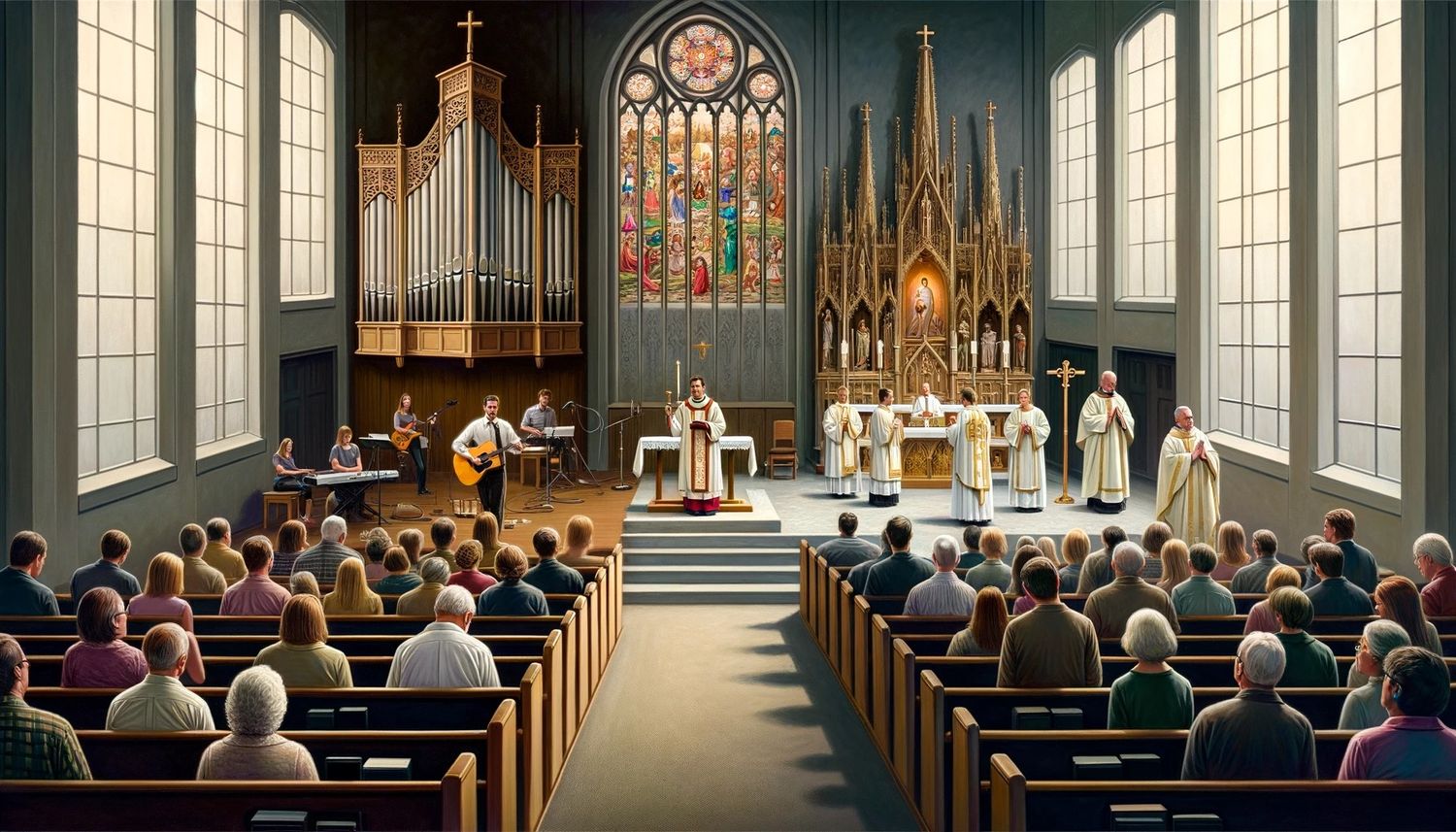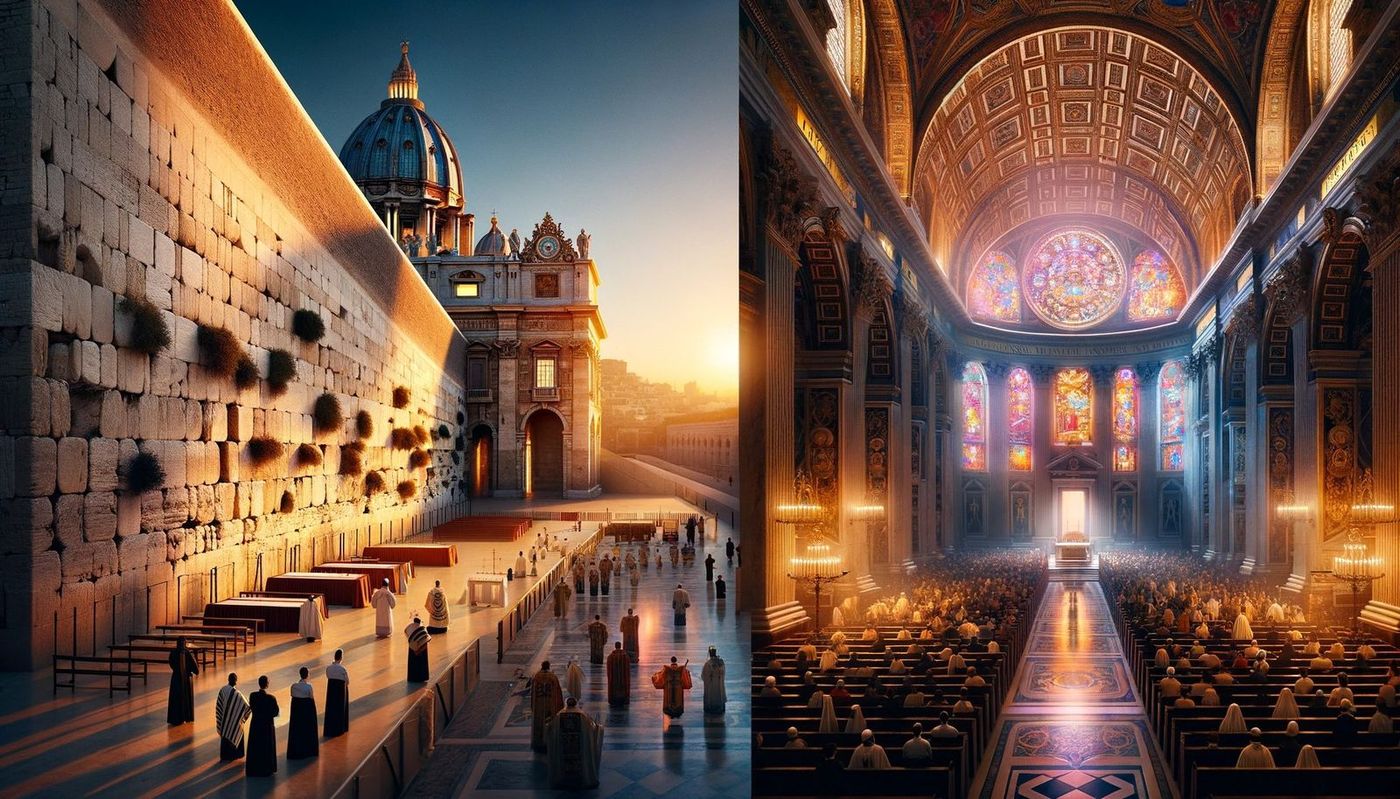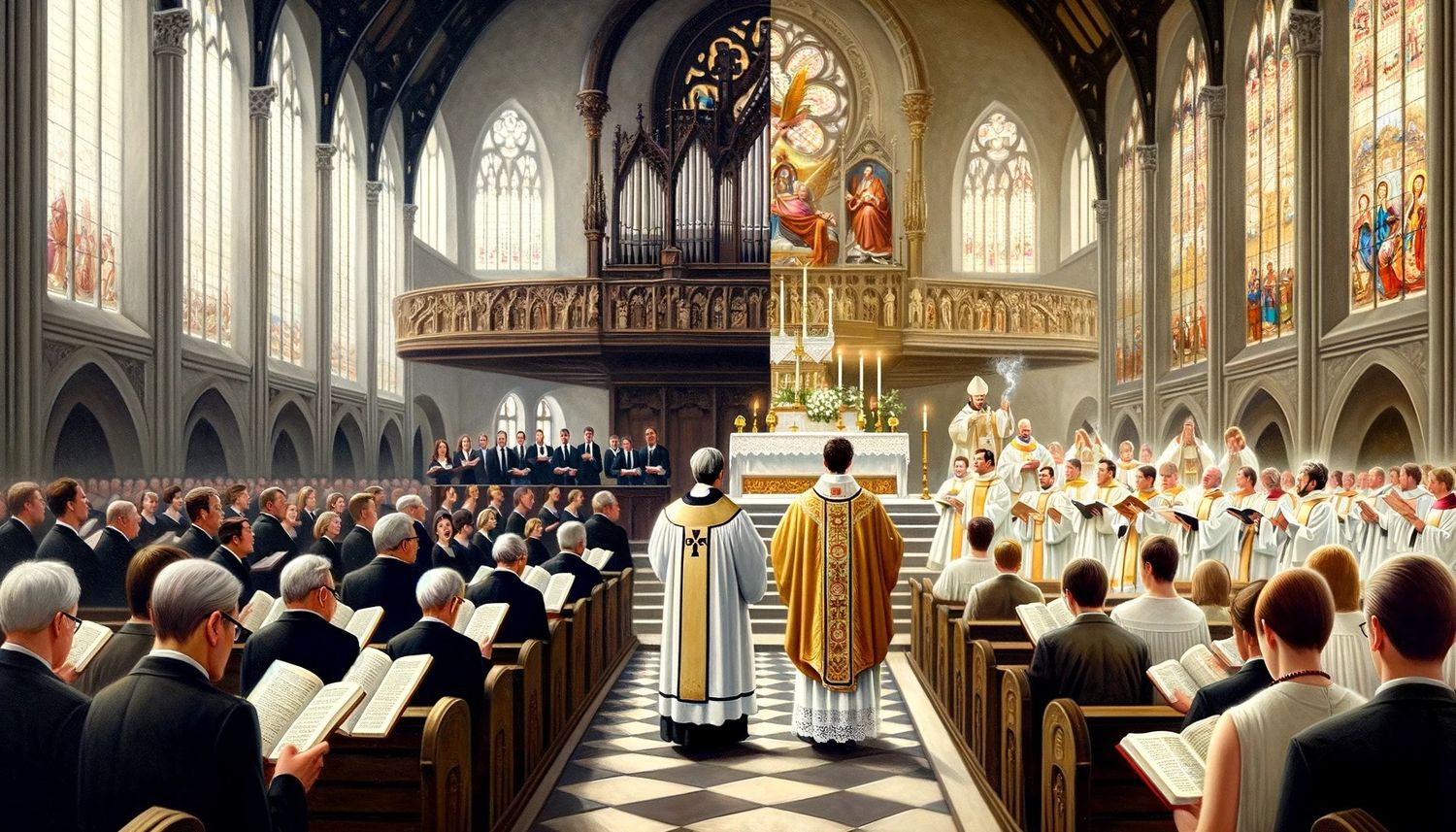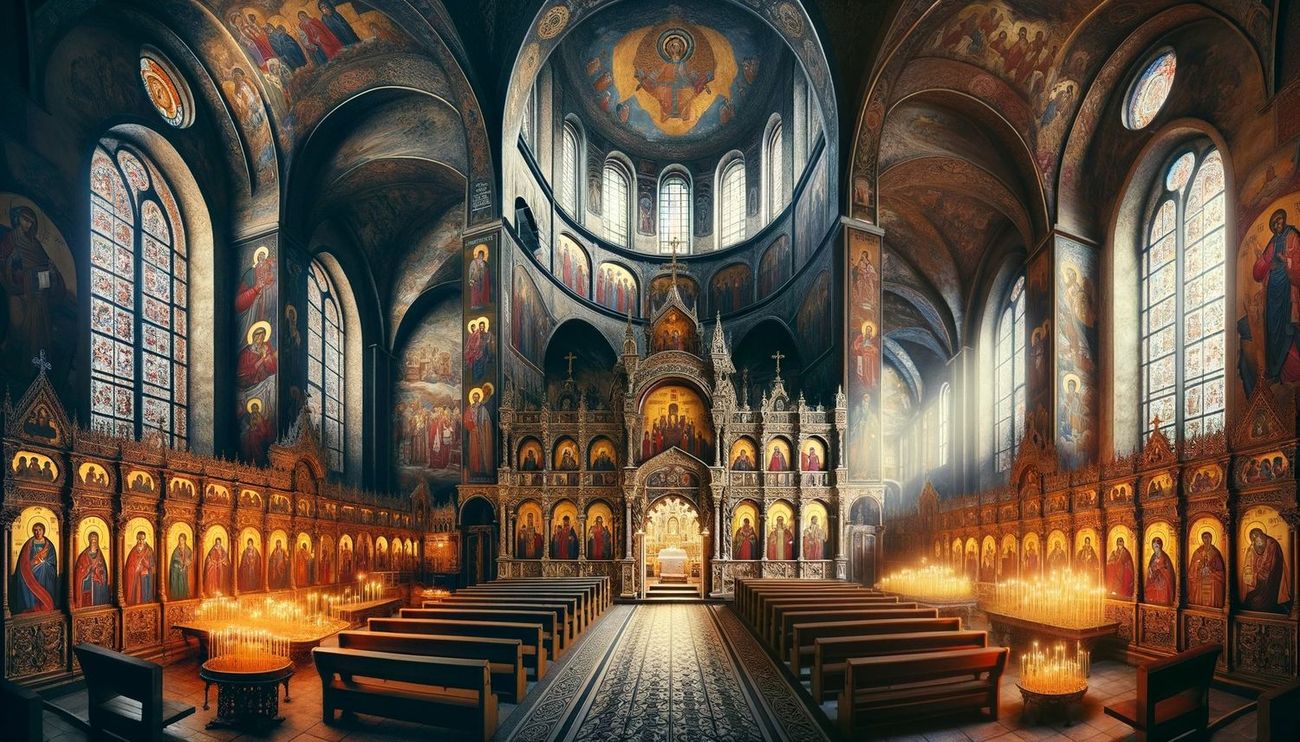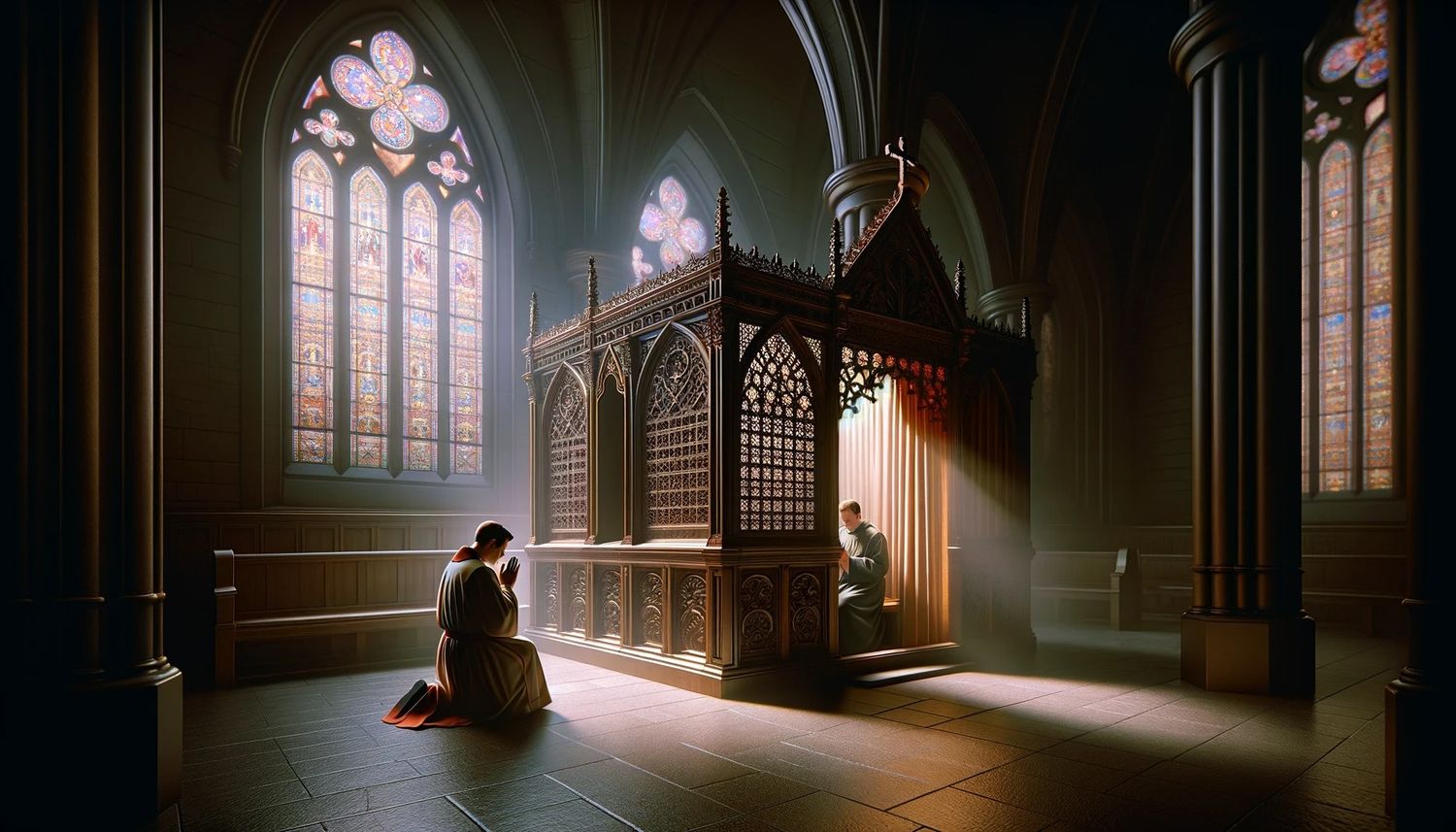Home>Theology and Spirituality>How Does Anglicanism Differ From Catholicism
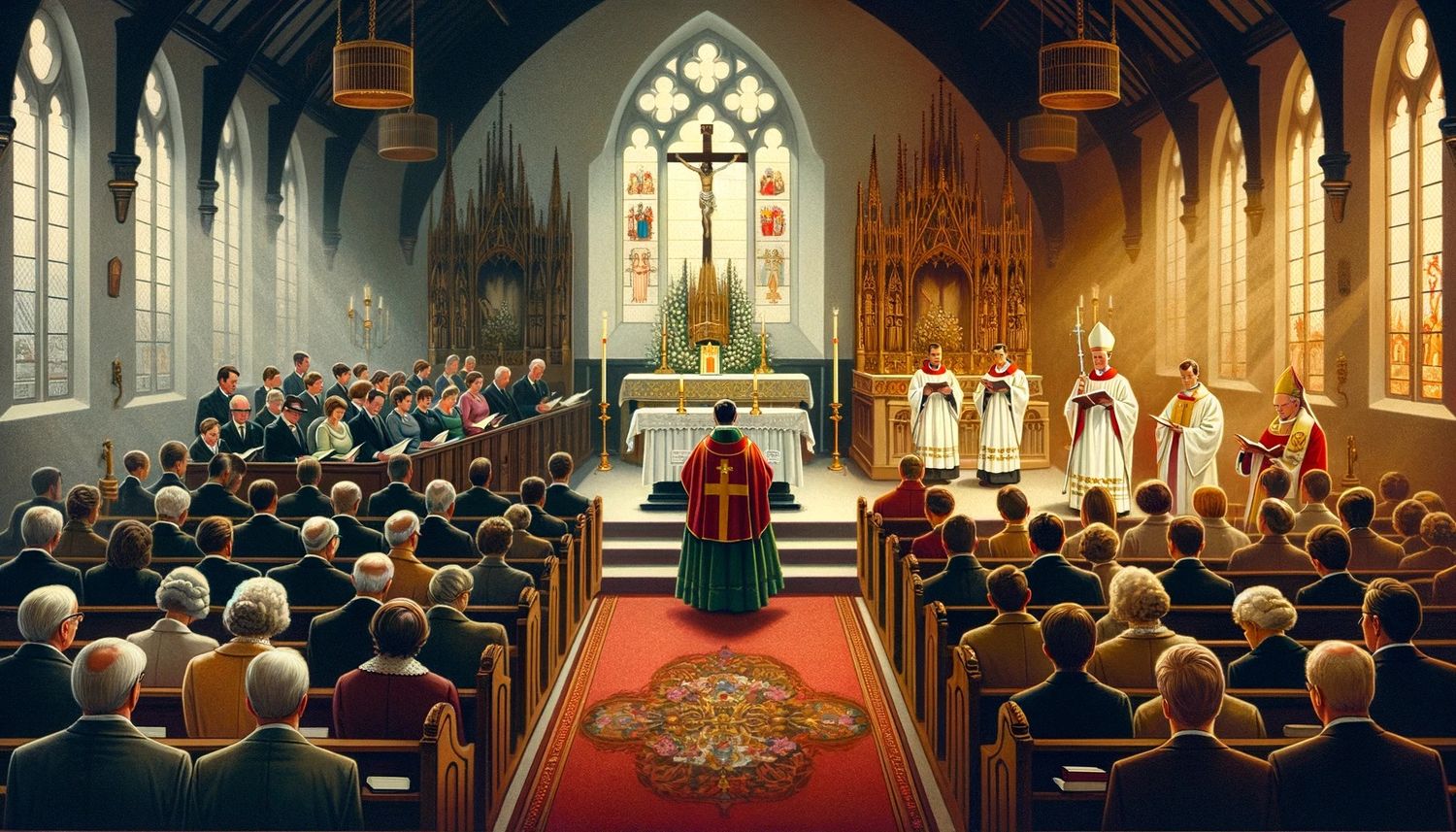

Theology and Spirituality
How Does Anglicanism Differ From Catholicism
Published: February 17, 2024
Peter Smith, Editorial Director at Christian.net, combines deep insights into faith, politics, and culture to lead content creation that resonates widely. Awarded for his contributions to religious discourse, he previously headed a major organization for religious communicators, enhancing dialogue on faith's societal impacts.
Discover the key differences between Anglicanism and Catholicism in terms of theology and spirituality. Explore the unique perspectives and practices of each tradition.
(Many of the links in this article redirect to a specific reviewed product. Your purchase of these products through affiliate links helps to generate commission for Christian.net, at no extra cost. Learn more)
Table of Contents
Introduction
Anglicanism and Catholicism are two prominent branches of Christianity, each with its own rich history, distinct beliefs, and practices. While both traditions share a common foundation in the teachings of Jesus Christ, they have evolved separately over the centuries, giving rise to unique theological perspectives and ecclesiastical structures. Understanding the differences between Anglicanism and Catholicism is essential for appreciating the diversity within Christianity and the various ways in which individuals connect with their faith.
As we delve into the nuances of Anglicanism and Catholicism, it becomes evident that these traditions have been shaped by historical events, theological debates, and cultural influences. While they both embrace the core tenets of Christianity, including the belief in the Holy Trinity and the significance of the life and teachings of Jesus, they have distinct interpretations of scripture, ecclesiastical authority, and the practice of worship. By exploring the historical roots, doctrinal differences, and contemporary expressions of Anglicanism and Catholicism, we can gain a deeper insight into the multifaceted tapestry of Christian faith and spirituality.
The journey of discovery begins with an exploration of the historical trajectories of Anglicanism and Catholicism, tracing their origins and the pivotal moments that have defined their identities. From there, we will navigate through the fundamental beliefs and practices that distinguish these traditions, shedding light on their respective approaches to authority, sacraments, worship, and the understanding of salvation and grace. By embarking on this comparative exploration, we embark on a journey of understanding and appreciation for the rich diversity that exists within the Christian faith.
Read more: How Does An Anglican Convert To Catholicism
History of Anglicanism and Catholicism
The history of Anglicanism and Catholicism is a tapestry woven with the threads of ancient traditions, theological controversies, and seismic historical events. Catholicism traces its roots to the earliest Christian communities, with its development as a distinct entity solidifying in the first few centuries after the life of Jesus Christ. The establishment of the papacy and the formulation of key doctrinal beliefs, such as the Nicene Creed, contributed to the emergence of a unified Christian identity centered around the authority of the Bishop of Rome.
In contrast, the origins of Anglicanism are intertwined with the complex interplay of political, religious, and cultural forces in medieval England. The English Reformation, spearheaded by King Henry VIII in the 16th century, marked a pivotal moment in the divergence of Anglicanism from Roman Catholicism. The Act of Supremacy in 1534 severed the ties between the English church and the authority of the Pope, leading to the establishment of the Church of England with the monarch as its supreme governor.
The subsequent reigns of monarchs, such as Edward VI and Elizabeth I, witnessed the consolidation of Anglicanism as a distinct religious tradition, characterized by a unique blend of Catholic heritage and Protestant theological influences. The Book of Common Prayer, first introduced in 1549, became a defining symbol of Anglican worship and spirituality, reflecting the synthesis of liturgical elements from both Catholic and Protestant traditions.
The historical trajectories of Anglicanism and Catholicism have been marked by periods of conflict, dialogue, and mutual influence. The Council of Trent in the 16th century reaffirmed key Catholic doctrines in response to the Protestant Reformation, while the Oxford Movement in the 19th century sparked a renewed interest in the catholic heritage of Anglicanism, leading to a revival of traditional liturgical practices and theological emphases.
As we reflect on the historical evolution of Anglicanism and Catholicism, we encounter a dynamic interplay of continuity and change, tradition and innovation. The diverse historical experiences of these traditions have shaped their identities, doctrines, and ecclesiastical structures, laying the foundation for the rich tapestry of Christian faith that continues to unfold in the present day.
Beliefs and Practices
Beliefs and practices form the bedrock of religious traditions, shaping the ways in which individuals understand and express their faith. In the case of Anglicanism and Catholicism, these foundational elements reflect the distinct theological emphases and spiritual orientations of each tradition.
Anglicanism
Anglican beliefs are characterized by a comprehensive embrace of scripture, tradition, and reason. This threefold approach, often referred to as the "Anglican Triad," underscores the importance of balancing the authority of the Bible, the wisdom of Christian tradition, and the rational faculties bestowed upon humanity. This nuanced perspective allows for a diversity of theological interpretations within Anglicanism, accommodating a broad spectrum of beliefs on contentious issues.
In terms of practices, Anglicanism encompasses a rich tapestry of liturgical expressions, drawing from both Catholic and Protestant influences. The Book of Common Prayer serves as a central liturgical text, guiding Anglican worship and spirituality with its eloquent language and timeless rituals. The sacraments, including baptism and the Eucharist, hold a central place in Anglican worship, serving as visible signs of God's grace and presence in the life of the community.
Catholicism
Catholic beliefs are anchored in the teachings of the Magisterium, the authoritative body of the Church entrusted with interpreting scripture and tradition. The concept of apostolic succession, tracing the lineage of bishops back to the apostles, underscores the continuity of Catholic teaching and leadership. The emphasis on doctrinal unity and the authority of the Pope as the successor of St. Peter distinguishes Catholic beliefs, providing a cohesive framework for theological understanding and moral guidance.
Catholic practices are characterized by a rich tapestry of liturgical rites and devotional expressions, reflecting the global diversity of the Catholic Church. The celebration of the Mass, with its intricate rituals and sacramental symbolism, lies at the heart of Catholic worship. The veneration of saints, the use of sacramentals, and the observance of traditional devotions contribute to the vibrant spiritual landscape of Catholicism, nurturing a deep sense of communal and personal piety.
Read more: How Is Anglican Different From Baptist
Distinctions and Unity
While Anglicanism and Catholicism exhibit distinct theological emphases and liturgical practices, they share a common commitment to the core tenets of Christian faith. Both traditions affirm the centrality of Christ's redemptive work, the significance of the sacraments, and the call to embody the love of God in the world. Despite their differences, Anglicanism and Catholicism stand as enduring expressions of the Christian faith, each contributing to the rich tapestry of global Christianity.
As we contemplate the beliefs and practices of Anglicanism and Catholicism, we encounter the multifaceted expressions of Christian faith, each offering a unique lens through which individuals connect with the divine. The interplay of tradition, scripture, and ritual underscores the dynamic nature of religious belief, inviting us to explore the depths of spirituality and the enduring quest for meaning and transcendence.
This section provides a glimpse into the rich tapestry of beliefs and practices that define Anglicanism and Catholicism, illuminating the diverse ways in which these traditions engage with the sacred and the communal dimensions of faith.
Authority and Leadership
Authority and leadership are pivotal aspects of religious traditions, shaping the governance, doctrinal interpretation, and pastoral care within ecclesiastical structures. In the contexts of Anglicanism and Catholicism, the dynamics of authority and leadership reflect the historical developments and theological orientations that have defined each tradition.
Anglicanism
In Anglicanism, the concept of authority is characterized by a dynamic interplay of diverse voices and perspectives. The Anglican Communion, a global network of autonomous provinces, embodies a decentralized model of authority, allowing for a degree of theological diversity and contextual adaptation within its member churches. At the heart of Anglican authority lies the concept of synodical governance, where decisions are made through representative assemblies comprising clergy and laity. This participatory approach to decision-making reflects the commitment to collective discernment and the recognition of the wisdom inherent in the community of believers.
The leadership structure within Anglicanism is marked by the role of bishops as guardians of the faith and unity within their respective dioceses. While bishops exercise spiritual oversight and pastoral care, their authority is tempered by the consultative processes involving clergy and laity. The Archbishop of Canterbury, as the symbolic head of the Anglican Communion, serves as a unifying figure, fostering dialogue and collaboration among the diverse provinces.
Catholicism
In Catholicism, authority is centralized within the Magisterium, the teaching authority of the Church vested in the Pope and the College of Bishops in communion with him. The concept of infallibility, as articulated in matters of faith and morals, underscores the definitive nature of Catholic doctrinal pronouncements. This emphasis on doctrinal unity and the authoritative interpretation of scripture and tradition provides a cohesive framework for theological coherence and ethical guidance within the Catholic Church.
The hierarchical structure of leadership in Catholicism is characterized by the Pope's role as the supreme pontiff, serving as the visible sign of unity and the successor of St. Peter. The College of Cardinals, the Roman Curia, and the global network of bishops contribute to the governance and administration of the Church, ensuring the preservation of doctrinal orthodoxy and the pastoral care of the faithful.
Read more: How Is Anglican Different From Baptist
Distinctions and Unity
The contrasting models of authority and leadership in Anglicanism and Catholicism reflect the diverse approaches to ecclesiastical governance and doctrinal interpretation within the Christian tradition. While Anglicanism embraces a more decentralized and consultative form of authority, Catholicism upholds a centralized and magisterial model rooted in the primacy of the Pope and the College of Bishops.
Despite these differences, both traditions share a common commitment to the spiritual oversight, pastoral care, and the proclamation of the Gospel. The interplay of authority and leadership within Anglicanism and Catholicism underscores the enduring quest for faithful stewardship and communal discernment within the rich tapestry of Christian faith.
This section provides a glimpse into the intricate dynamics of authority and leadership within Anglicanism and Catholicism, illuminating the diverse expressions of ecclesiastical governance and pastoral ministry that shape the life of these traditions.
Sacraments and Worship
Sacraments and worship form the spiritual core of religious practice, serving as conduits of divine grace and communal expression of faith. In the contexts of Anglicanism and Catholicism, the sacramental life and liturgical worship reflect the distinctive theological emphases and ritual expressions that define each tradition.
Anglicanism
In Anglicanism, the sacramental life is anchored in the celebration of the two central sacraments, namely baptism and the Eucharist, along with the five other sacraments recognized by the Catholic tradition. The Book of Common Prayer, a hallmark of Anglican liturgy, guides the worship practices, offering a blend of ancient and contemporary language that resonates with the diverse congregations. The Eucharist, also known as Holy Communion or the Lord's Supper, holds a central place in Anglican worship, embodying the real presence of Christ in the consecrated elements. The sacramental theology of Anglicanism encompasses a spectrum of interpretations, accommodating both the traditional real presence doctrine and the symbolic understanding of the Eucharist.
The Anglican worship experience is characterized by its rich tapestry of liturgical expressions, incorporating elements from both Catholic and Protestant traditions. The use of ceremonial vestments, liturgical processions, and choral music contributes to the aesthetic beauty and solemnity of Anglican worship. The lectionary, a prescribed schedule of scripture readings, shapes the rhythm of worship, guiding the congregation through the narrative of salvation history and the teachings of Jesus Christ.
Catholicism
In Catholicism, the sacramental life is woven into the fabric of daily spiritual practice, encompassing the seven sacraments instituted by Christ. The celebration of the Mass, with its intricate rituals and liturgical precision, stands as the focal point of Catholic worship, culminating in the reception of the Eucharist. The Catholic sacramental theology emphasizes the real presence of Christ in the Eucharist, affirming the transformative power of the sacraments in nourishing the spiritual life of the faithful.
Catholic worship is characterized by its rich tapestry of liturgical rites and devotional expressions, reflecting the global diversity of the Catholic Church. The veneration of saints, the use of sacramentals, and the observance of traditional devotions contribute to the vibrant spiritual landscape of Catholicism, nurturing a deep sense of communal and personal piety. The liturgical calendar, with its cycle of feasts and seasons, provides a rhythmic structure to Catholic worship, inviting the faithful to immerse themselves in the sacred mysteries of the Christian faith.
Read more: How Is Anglican Different From Baptist
Distinctions and Unity
While Anglicanism and Catholicism exhibit distinct sacramental and liturgical expressions, they share a common commitment to the transformative power of worship and the sacraments in nurturing the spiritual life of the faithful. The interplay of ritual, symbolism, and communal participation underscores the dynamic nature of sacramental and liturgical worship, inviting individuals to encounter the divine presence in the midst of the worshipping community.
This exploration of the sacraments and worship within Anglicanism and Catholicism offers a glimpse into the diverse expressions of spiritual practice and communal devotion that enrich the tapestry of Christian faith.
Views on Salvation and Grace
In both Anglicanism and Catholicism, the theological perspectives on salvation and grace are deeply rooted in the Christian understanding of redemption, divine mercy, and the transformative work of God in the lives of believers. While there are nuanced differences in emphasis and theological articulation, both traditions affirm the central role of grace in the process of salvation and the restoration of humanity's relationship with the divine.
Within Anglicanism, the views on salvation and grace reflect a broad spectrum of theological interpretations, encompassing diverse perspectives on the nature of divine grace and its transformative power. The Anglican tradition embraces the concept of prevenient grace, the notion that God's grace precedes and enables human response to the call of salvation. This emphasis on the primacy of God's initiating grace underscores the belief in the universal scope of God's redemptive love, inviting all individuals to partake in the offer of salvation through faith and obedience.
Catholicism, on the other hand, emphasizes the synergistic relationship between divine grace and human cooperation in the process of salvation. The Catholic understanding of grace encompasses both sanctifying grace, which transforms the soul and enables participation in the divine life, and actual grace, which assists individuals in responding to God's call to holiness. The sacramental life of the Church, particularly the reception of the Eucharist and the sacrament of reconciliation, serves as channels of grace, nurturing the spiritual growth and moral transformation of the faithful.
Despite these nuanced differences, both Anglicanism and Catholicism affirm the foundational belief in the redemptive work of Christ and the transformative power of grace in the lives of believers. The theological reflections on salvation and grace within these traditions invite individuals to contemplate the profound mystery of divine mercy, the transformative power of grace, and the enduring hope of redemption that animates the Christian faith.
This exploration of the views on salvation and grace within Anglicanism and Catholicism offers a glimpse into the diverse theological perspectives that enrich the tapestry of Christian faith, inviting individuals to engage with the profound mysteries of divine love and the transformative power of grace in the journey of salvation.
Conclusion
In conclusion, the comparative exploration of Anglicanism and Catholicism unveils a rich tapestry of historical, theological, and liturgical dimensions that define these two prominent traditions within Christianity. The historical trajectories of Anglicanism and Catholicism, shaped by the interplay of political, religious, and cultural forces, have given rise to distinct theological perspectives, ecclesiastical structures, and spiritual practices. From the English Reformation that marked the divergence of Anglicanism from Roman Catholicism to the enduring legacy of the Catholic Church's doctrinal unity and global presence, the historical narratives of these traditions reflect the dynamic interplay of continuity and change, tradition and innovation.
The beliefs and practices of Anglicanism and Catholicism embody a profound commitment to the core tenets of Christian faith, while embracing distinctive theological emphases and liturgical expressions. The Anglican Triad, with its emphasis on scripture, tradition, and reason, provides a nuanced framework for theological diversity within Anglicanism, while Catholic beliefs are anchored in the authoritative teachings of the Magisterium and the emphasis on doctrinal unity. The sacramental life and liturgical worship within these traditions reflect a vibrant tapestry of ritual expressions, inviting individuals to encounter the divine presence in the midst of the worshipping community.
The dynamics of authority and leadership within Anglicanism and Catholicism underscore the diverse approaches to ecclesiastical governance and pastoral ministry, reflecting the decentralized and consultative model of Anglican authority and the centralized and magisterial structure of Catholic leadership. Despite these differences, both traditions share a common commitment to the spiritual oversight, pastoral care, and the proclamation of the Gospel, contributing to the enduring quest for faithful stewardship and communal discernment within the rich tapestry of Christian faith.
The theological perspectives on salvation and grace within Anglicanism and Catholicism invite individuals to contemplate the profound mystery of divine mercy, the transformative power of grace, and the enduring hope of redemption that animates the Christian faith. While there are nuanced differences in emphasis and theological articulation, both traditions affirm the central role of grace in the process of salvation and the restoration of humanity's relationship with the divine.
In essence, the exploration of Anglicanism and Catholicism illuminates the diverse expressions of Christian faith, each offering a unique lens through which individuals connect with the divine. The interplay of tradition, scripture, and ritual underscores the dynamic nature of religious belief, inviting us to explore the depths of spirituality and the enduring quest for meaning and transcendence within the multifaceted tapestry of Christian faith.
